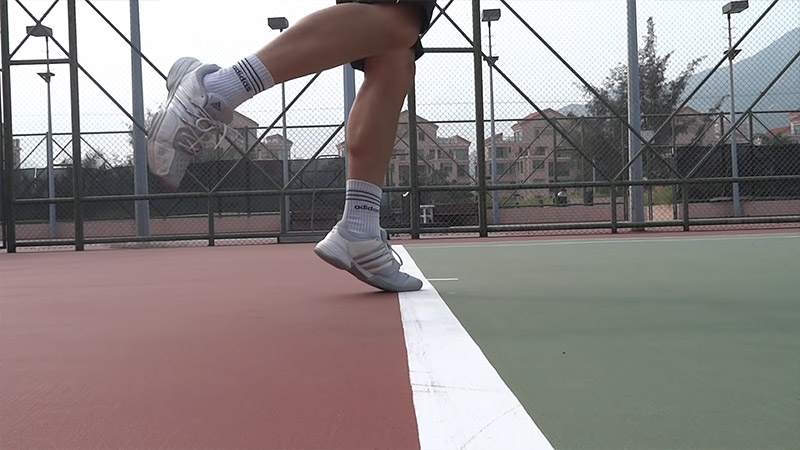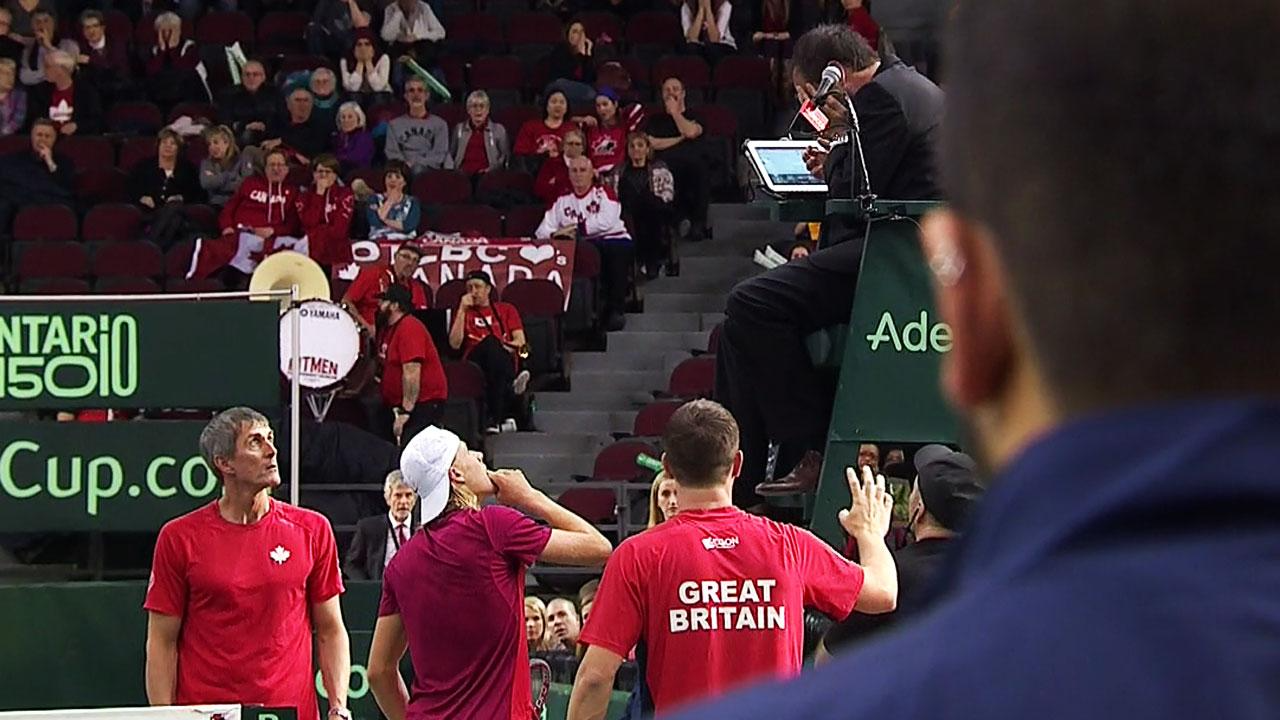There are many tennis rules in a game with an incredible history. A very important rule is the fault which makes sure that play is fair and each player adheres to the same rules.
In a game of tennis, a point officially starts when a player serves the ball. This service motion can be overarm or underarm and the ball must land in an opponent’s service court on the opposite side from where the service comes from. A service fault is a term given when a player’s first serve is invalid.
This could be for several reasons that we will cover in this article. A second serve fault then results in something called a double fault and with this, the server loses the point. There are many ways that these services can be invalid and, in this article, we will cover the most common types of faults.
What is a Fault in Tennis – Most Common Reasons
- A serve where the tennis ball does not reach the net cord and lands on the same side.
- A serve does not land within the opponent’s correct service box
- A serve where the ball hits any part of the net and does not make it over to the opponent’s side of the court. Even if it hits a permanent fixture such as the net post and goes in it is still considered a fault.
- A serve that is considered an illegal action – for example where a server hits the ball more than once to get the ball over the net
- Illegal release of the ball when serving – a ball needs to be in one hand with the racket in the other. The hand with the ball then releases the ball and the other hand with the racket hits the ball. There are exceptions made for one-handed players.
Also Read: What is an ace in tennis?
Who wins the point on a fault?
Put simply, the person who has performed a fault will lose that point. Let’s take the example of service faults. It is the start of a game, the player serving hits both serves into the net and therefore loses the point.
The Different types of faults
A normal fault
When a first serve does not reach an opponent’s service box, this is called a first fault. A missed serve in tennis can be incredibly frustrating. The good news is that tennis players get two chances on the service, so the player must refocus and go again.
A double fault
This is a second-serve fault. This is a term given when the player who is serving fails to land the ball in the opponent’s court on both serves and therefore goes on to lose this point. It is also called a second fault. For every double fault, the serving player will lose that point. People serve double faults for several reasons, the most common is pressure.
The server might be down in the game or the set and feel they need a really big second serve, only for it to go out. Most players will vary their second serve to hit with less power and more spin to minimize the number of double faults they hit.
A foot fault
The foot fault rule is not always the easiest fault to call. A foot fault happens when either the front foot or the back is ahead of the baseline, or when a player’s feet cross the center mark when the racket makes contact with the ball on service. In a professional tennis match, there is a line judge whose sole responsibility is to look for a foot fault.
Foot faults can be very disruptive to a player’s game. In a friendly match, it is much harder to either know that you are foot faulting or see over to your opponent’s side of the court and watch their feet! The best way to avoid a foot fault is to start with both feet behind the baseline and practice your take-off and landing on your feet. It will soon become a rhythm as to where you land.
A time violation
If a player takes too long between points (there is now a time clock in place for professional matches) the chair umpire can award a point penalty to the other player. A time violation might be given if a server is taking too long to serve a ball, if a player is taking too long between points, or if the receiver is not ready to receive serve within time regularly.
Even though there are strict rules of tennis, the umpire has the final say on this and can use his discretion where needed. Professional tennis players such as Rafael Nadal and Novak Djokovic have both been accused of pushing time limits with their opponents when serving and also at the change of ends.
Please note a time violation is different from other ‘code’ violations which will be covered in a separate article.
Frequently asked questions
Can you lose a match on a double-fault
Yes, a game and match can be lost if a player serves a double fault.
What is the difference between a fault and a let?
A fault is where a player has either missed a serve or their foot has crossed the service line before serving. The chair umpire and line judges will then call fault and the player takes a second serve. If there is a double fault the point is awarded to the non-server. A let is where the Chair Umpire asks the players to replay the point.
This can be for many reasons, it could be that a bird has flown into the court mid-rally or that there is a power cut mid-rally. It could simply be a service let where the ball has struck the net cord and the point is replayed. In the case of a let, there is no loss or gain of a point.
Which player on the ATP and WTA tour have served the most double faults?
Anna Kournikova holds the world record for most double faults in a match with an incredible 31 service faults. Marc Rosset, a former Swiss professional player is not far behind her having served a total of 30 double faults during his match with Arnaud Clements during a 2001 Davis Cup tie. The record for most consecutive double faults is held by Britain’s Greg Rusedski who hit 5 in a row during his match with Mihail Youzhny in 2006.
What happens after a fault in tennis?
After a fault, the server gets another chance to attempt a proper serve. If a double fault is committed, the server loses the point.
Can a foot fault be called during a rally?
No, foot faults are only called during the serving motion.
What is considered a fault in tennis?
The term “fault” refers to a missed serve. A serve that is swinging and missing is considered a fault. By catching the ball and starting over, the server can stop the serve. It is permissible for the server to serve underhand, but the ball cannot be bounced before hitting it. Before the receiver’s readiness, the server may not serve.
How many faults are you allowed in tennis?
The play stops immediately after a fault occurs. A second attempt is allowed if only one fault has occurred at this point. The point is awarded to the receiver if there are two faults on this point: this is known as a double fault.
Can you lose on a fault in tennis?
First serves that are faulted do not earn a player a point. Instead of receiving a second serve, the opponent gets a point if the second serve is faulty. When players commit two faults in a row, they can lose a match, but this is extremely rare in professional tennis.
What is considered a double fault in tennis?
It is a fault when a player fails to serve the ball correctly over the net and in the correct place. If the player fails on both chances, it is called a “double fault.”
Final Thoughts
Some people view faults as unforced errors where a player gives his/her opponent a free point. Others will say that faults can be caused due to pressure or a player losing their confidence.
Either way, a fault is a large part of tennis, and any player, professional or amateur, will want to reduce the amount they incur. The good news is that with a little bit of practice, a player can reduce the amount of faults in their game. Take for example the service.
The easiest way to get better is to practice. By taking a basket of balls to your local court you can practice hitting serves, both first and second-serve variations, and with this you will become more consistent. It is also good to keep practicing this through the tennis matches you play. Learning never ends.
Related Articles;
How to Hit a Kick Serve? Top Tips From a Professional – Tennis Pursuits
The Best Tennis Servers Of All Time [2024] – Tennis Pursuits
How To Hit The Best Serve In Tennis – Tips From a Pro – Tennis Pursuits
Tennis Scoring System Explained in 2024: Points & Sets – Tennis Pursuits







Comments are closed.